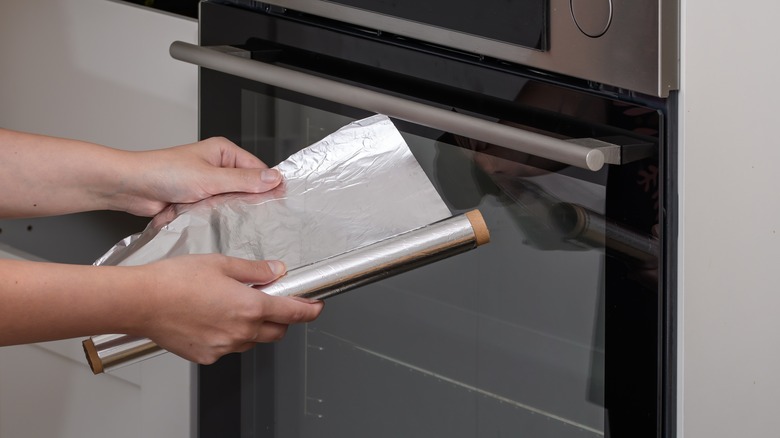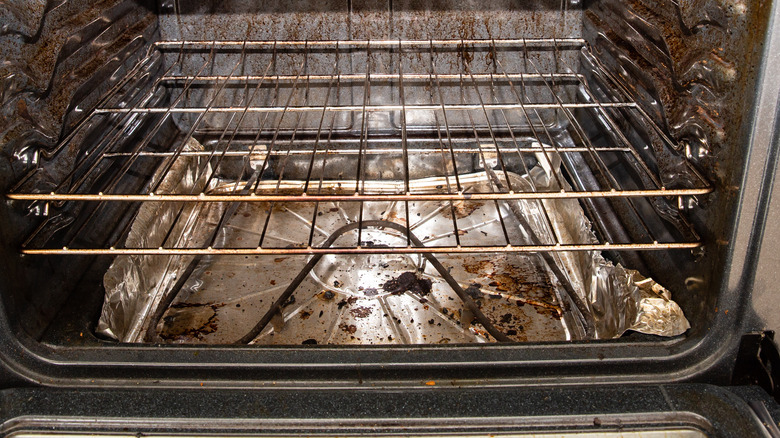Never Line Your Oven With Aluminum Foil, Here's Why
No one likes to clean the oven. However, lining the oven with foil is not a way to avoid the greasy chore. Unlike foil-lined baking sheets, lining the oven can lead to serious problems for your recipes and the oven itself. Prolonged use could send the fire department to your door. This is because the foil messes with the oven temperatures by inhibiting airflow within the space. The foil blocks and reflects the heat, which causes the temperatures to fluctuate oddly.
Some parts of the oven may overheat, while others don't get hot enough, depending on how the foil is distributed in the oven. The foil can also damage the heating elements in electric and gas stoves because of the uneven heat distribution (or flames in gas stoves). It can cause electric heating elements to burn out and inflict permanent damage on the oven's thermometer. The list goes on and on — basically, you'll just need to find another way to keep your oven clean.
This means no foil on the racks too
Avoiding foil lining in the oven also means no foil on the racks as well. This can cause the same airflow issues that come with lining the bottom of the oven. That includes airflow restrictions, uneven heat distribution, and an increase in the risk of starting a fire. Because aluminum foil's heat tolerance isn't actually all that high, it could melt to the racks and cause damage that way. It can also scratch the porcelain finish inside ovens as the foil-wrapped racks are slid in and out of the oven. Foil can tear easily and acidic foods can destroy them, so certain food can also damage them. This will lead to spills at the bottom of the oven despite the efforts spent wrapping foil on the racks.
Lining the oven with foil is never the answer to preventing spills in the oven. There are other ways to assist even the clumsiest of cooks. The first tip is to place the pies, cakes or casseroles on a baking sheet and then put the baking sheet into the oven (sheet pans are easier to clean than the inside of an oven).
Another tip is to watch the way you fill your dishes. Overfilling a pan and trying to place it into the oven is a common cause for spills. Cooks underestimate how much the liquid in a dish expands while cooking. Underfill the dish slightly to ensure there's no spillover. Preventing spills on a dish-by-dish basis is a lot easier on your oven.

